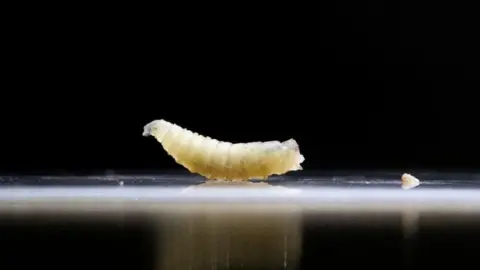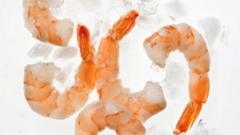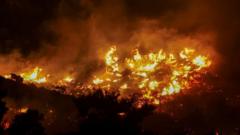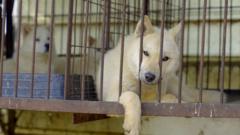Four people have been diagnosed with sepsis after eating at a luxury restaurant in Stockholm as part of a suspected listeria outbreak. Health authorities report that at least 15 individuals have been treated or are under observation in the hospital after dining at Coco & Carmen, a premium venue in the Östermalm district of the Swedish capital. Fortunately, most of those affected are not seriously ill, with none requiring intensive care to date.
Listeria is a bacterium that rarely causes severe infections, known as listeriosis, but may lead to life-threatening complications such as sepsis. Regional health officials have confirmed that the initial tracing of infected individuals, focused on those who dined at the restaurant between September 25 and 27, has been extended to include patrons from September 23 and 24.
Maria Rotzén Östlund, an infectious disease physician, advised those experiencing ongoing symptoms, including fever, vomiting, or diarrhea, to seek assessment at a hospital emergency room. Authorities caution that a significant number of people may have been infected, particularly pregnant women, elderly individuals, and those with compromised immune systems.
Reports indicate that around 80 people have officially registered symptoms of food poisoning linked to Dining at Coco & Carmen, while up to 400 others have been contacted in relation to infection tracing.
The restaurant has voluntarily closed as investigations into the cause of the outbreak continue, with management stating that they have always passed food safety inspections and are cooperating fully with health authorities. Chef Joakim Almquist expressed his sincere apologies and concern for those affected, highlighting the restaurant's commitment to guest safety.
Listeria can commonly be found in soil, water, and various animal products, and contamination typically occurs through improperly stored food. Most people experience mild symptoms resembling stomach flu, but serious illnesses such as meningitis or sepsis can develop, with symptoms potentially appearing between several days to three weeks after exposure.
Listeria is a bacterium that rarely causes severe infections, known as listeriosis, but may lead to life-threatening complications such as sepsis. Regional health officials have confirmed that the initial tracing of infected individuals, focused on those who dined at the restaurant between September 25 and 27, has been extended to include patrons from September 23 and 24.
Maria Rotzén Östlund, an infectious disease physician, advised those experiencing ongoing symptoms, including fever, vomiting, or diarrhea, to seek assessment at a hospital emergency room. Authorities caution that a significant number of people may have been infected, particularly pregnant women, elderly individuals, and those with compromised immune systems.
Reports indicate that around 80 people have officially registered symptoms of food poisoning linked to Dining at Coco & Carmen, while up to 400 others have been contacted in relation to infection tracing.
The restaurant has voluntarily closed as investigations into the cause of the outbreak continue, with management stating that they have always passed food safety inspections and are cooperating fully with health authorities. Chef Joakim Almquist expressed his sincere apologies and concern for those affected, highlighting the restaurant's commitment to guest safety.
Listeria can commonly be found in soil, water, and various animal products, and contamination typically occurs through improperly stored food. Most people experience mild symptoms resembling stomach flu, but serious illnesses such as meningitis or sepsis can develop, with symptoms potentially appearing between several days to three weeks after exposure.




















